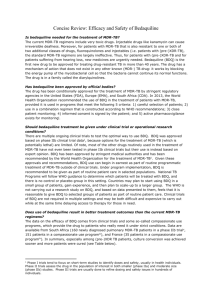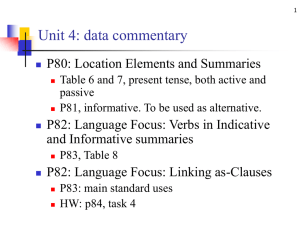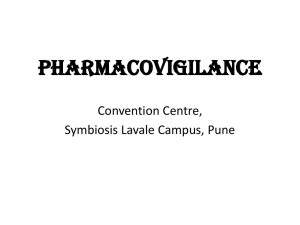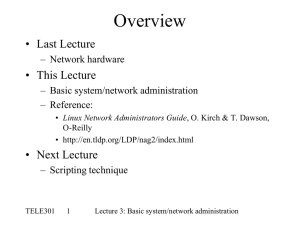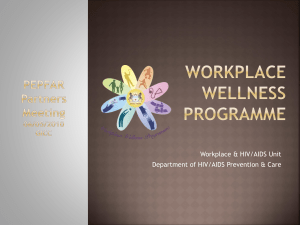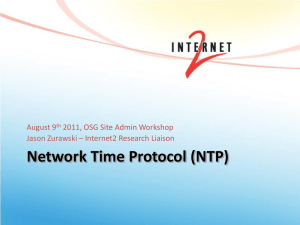Document
advertisement
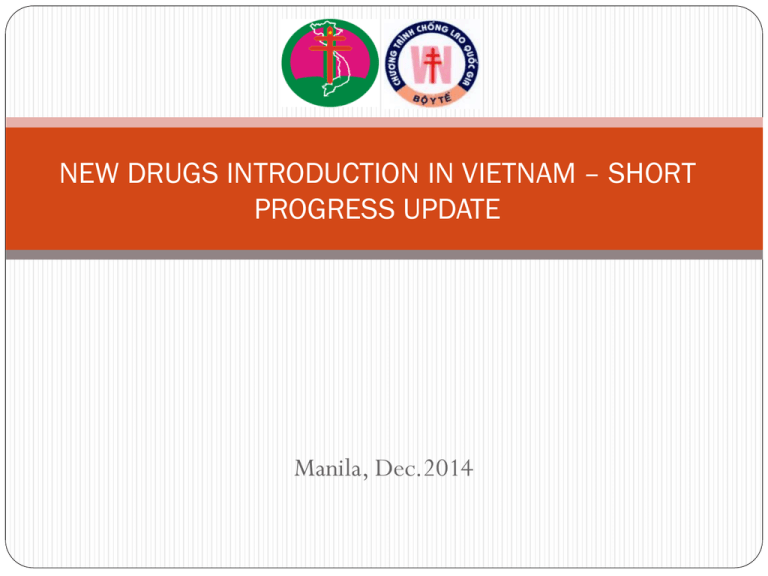
NEW DRUGS INTRODUCTION IN VIETNAM – SHORT PROGRESS UPDATE Manila, Dec.2014 Summary Process and activities done by steps acording to implementation plan Challenges and obstacles encountered BDQ introduction/ Implementation plan Step 1. Country’s readiness assessment Step 2. Identification of partners involved (MOH, KNCV, WHO, NI&ADR centers, CHAI) Step 3. Establishment of National Task Force and BDQ technical working group Step 4: Development of national treatment plan for introduction of BDQ Step 5: Bedaquiline implementation Step 6: Generating evidence for scale up Step 1. country’s readiness assessment-Done Country level Ha Noi Ho Chi Minh Can Tho Laboratory capacity x x x x Clinical Review Committee X (Nat, Tx Unit) x x x Case management x x x x Recording & reporting x x x x Monitoring & Evaluation X (periodically, all levels, checklist) x x x Pharmacovigilance x x x x Technical assistance X x x x DRS X (4 times) x x x Budget X (GF) x x x Drug supply system x x x x Reporting and recording Papers based R-R according to WHO’s report forms Electronic reporting system VITIMES (DS-TB) e-TB manager (DR-TB): has piloted in HCM City and expanded (at district level in HCMC and provincial level in other PMDT provinces) PV methods in NTP Since 2013 Cohort Event Monitoring Spontaneous reporting Since 1994 CEM in MDR-TB treatment Study B6.1: AEs of anti-TB drugs in the treatment of MDR-TB in Vietnam. Timeline: 2014 Activities 2015 2016 2013 1 2 3 4 5 6 7 8 9 101112 1 2 3 4 5 6 7 8 9 101112 1 2 3 4 5 6 7 8 9 101112 Protocol and tools Protocol approval Training Enrolment Data collection, data input & patient management Data analysis Report End up Now Surveillance and supporting Step 2-3 (Done) Step 2. Identification of partners involved (MOH, KNCV, WHO, NI&ADR centers, CHAI) Step 3. Establishment of : National Task Force (Vice Minister, representatives of MOH related departments, NTP) BDQ technical working group Step 4: Development of national treatment plan for introduction of BDQ-Done Selection of pilot sites (Hanoi, HCMC, Can Tho) Update the treatment guidelines and training materials Timeline development Budget: GF approval for the first 100 patients in 2015 Update treatment guideline Target group for BDQ introduction FQ resistance in MDR-TB patients Second line injectable resistance in MDR-TB patients XDR-TB patients Others: Intolerate with SLDs in standard cat 4 regimen Resistant to at least 2 group 4 drugs (Cs,Pto/Eto,PAS) Use on top of treatment regiment per WHO guidelines (companion handbook 2014) Timeline development Actitities TWG meeting Task Force meeting Implementation plan Submission to MOH for approval Drugs order Update the treatment guidelines and training materials Training for pilot sites Update e-TB manager for BDQ Dev. Of R-R and PV for BDQ Budget Patients screening for treatment Treatment initiation TA Supervision Q1 2014 X Q2 2014 X Q3 2014 X X X X Q1 2015 X X X X X Q2 2015 onwards X X X X X Q4 2014 X X X X X X X X X X X X X X X BDQ introduction process-Activities done April 2013: 1st introduction workshop of new TB drug Bedaquiline (WHO – Viet Nam MOH – NTP) February 2014: 2nd workshop about BDQ (WHO – MOH – NTP): country’s readiness assessment for BDQ implementing April 2014: establishment and 1st meeting of Vietnam BDQ technical working group, 1st draft of National Implementation plan June 2014: Global Fund approved budget for treatment with BDQ for the first 100 patients June 2014: 1st draft of Clinical guidelines of using BDQ in MDR/pre-XDR and XDR-TB treatment July 2014: MOH officially established the National Task force for implementing new TB drug (heading by Vice Minister and representatives from related departments of MOH, NTP) August 2014: NTP in collaboration with Pharmacovigilance dept. of Hanoi Pharmacy University to prepare the CEM for ADRs of BDQ (B5.16) September 2014: 3rd meeting of BDQ TWG: revise and finalize required document. November 2014: Join the meeting on preparing for the introduction of new TB drugs & Inter-regional workshop on PV 1st Task Force meeting: ways to prepare supporting documents to submit for approval Step 5: Bedaquiline implementation Hold advocacy and initiation workshops in 3 pilot provinces among NTP – Provincial People Committee – Department of health – Provincial TB hospital (Dec 2014) Preparing 3 pilot sites: materials, equipment and trainings (patient screening, clinical management, active pharmacovigilance …- Jan 2015) Place the order of drugs (Jan 2015) Patient screening and initiation: 1st patient enrolled in BDQ treatment (2nd Q/2015) Monitoring treatment response Detection, management and reporting of adverse events Step 6: Generating evidence for scale up Minimum basic data set (compared with control groups) Adverse events (harms) in individuals exposed to new drug % of patients treated with bedaquiline who experienced severe adverse events (heart, liver) % of patients whose regimen need to be changed due to AE Response to treatment (effectiveness) % of success rate Time to culture convertion % of patients who resistant to bedaquiline Adhearance to treatment: % Default % interrupt using BDQ during 6 months Patient’s experience of using BDQ KEY DATA FOR ASSESSMENT OF Bedaquiline IMPLEMENTATION (No screened, eligible, enrolled, Tx outcome, etc) Advantages Strong commitment of NTP leaders and pilot sites in BDQ implementation in Vietnam. Establishment of National TF with representatives from MOH (powerful advocacy) • Great technical support from partners, especially WHO (both head quarter and country office): experts, technical documents • Budget for 1st 100 patients (including drugs, examinations and PV) has already been approved by the Global Fund • Good collaboration with HN Pharmacy university in implementing pharmacovigilance activities for BDQ in the same time (also funded by the GF) Main challenges • BDQ is still in the phase III clinical trial May delay in administrative procedures require stronger advocacy effort • GF mainly supports drugs and examinations, still lack of funding for program cost and health system cost 17
